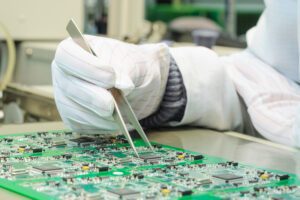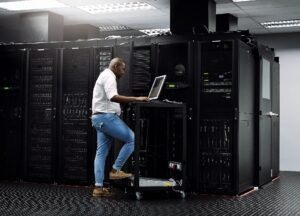At Data Centres Europe 2012, in Nice, I asked Laurent Vernerey, executive VP of IT Business at Schneider Electric, how the company was helping organizations to adapt to the constant pressure of rapidly changing market conditions.
“We see such massive changes happening,” said Laurent, “that we found the first step for us to reorganize our own business to be focused upon certain end-user segments. The first thing for us is to know our customers’ business.”
“Second of all, specialize ourselves so that we understand the key issues which our customers are facing. Third, make available all our resources to them. And fourth, create an ecosystem for innovation: an ecosystem where we are working not only ourselves internally, but where we’re working with other companies too.”
The difference this will make is that the customer will immediately recognize that they have in front of them somebody who understands their business. They will engage with a person who is helping to represent the full portfolio of Schneider Electric and removing some of the complexity of dealing with multiple layers of the organization. Finally, a customer will see that Schneider Electric is completely focused upon energy management.
So, as companies moving towards opex-based solutions to solve their requirements, how quickly will customers turn to established brands like Schneider Electric to trust them for bigger solutions?
“First, it’s going to be a question of how fast we demonstrate that we are able to standardize our solutions,” said Laurent. “I think the transformation from one model to another is a question of us demonstrating [to customers] that we can first of all be involved earlier in the stage of design of their solutions, but also demonstrate that we have a service capability for the full lifecycle of data centers.”
“The way we do this is by growing our internal resources or by acquisition; most recently the acquisition of Lee Technologies in the US, which provides us with competencies and skills to understand what’s happening in the data center and how we can operate and maintain a data center.”
So is Schneider Electric moving towards offering a data center as a SKU (stock keeping unit)?
“We’ve made steps towards that,” said Laurent. “Our Facility Modules, for example, if you want 500kW of power or 500kW of data center cooling, I’d say we’re here. We still have work to do in the supply chain to take advantage of our Global footprint to really make sure we deliver on the promise to integrate our solutions together.”
Software is going to play a key role in ensuring that infrastructure offerings from different manufacturers can interface to one another. “StruxureWare for Data Centers has been one of our main investments over the last two or three years,” said Laurent. “Recognizing that customers are looking for the ability to monitor, control and operate their data center using software, we made the choice to be an open systems architecture. To make our customer could not only operate our own equipment with the software but to manage all equipment in the industry.”
“One of the things that we have done with Struxureware for Data Centers is make sure we were clearly focusing on the energy monitoring, making sure that we were controlling the infrastructure, but also helping with the capacity planning of the data center.”



